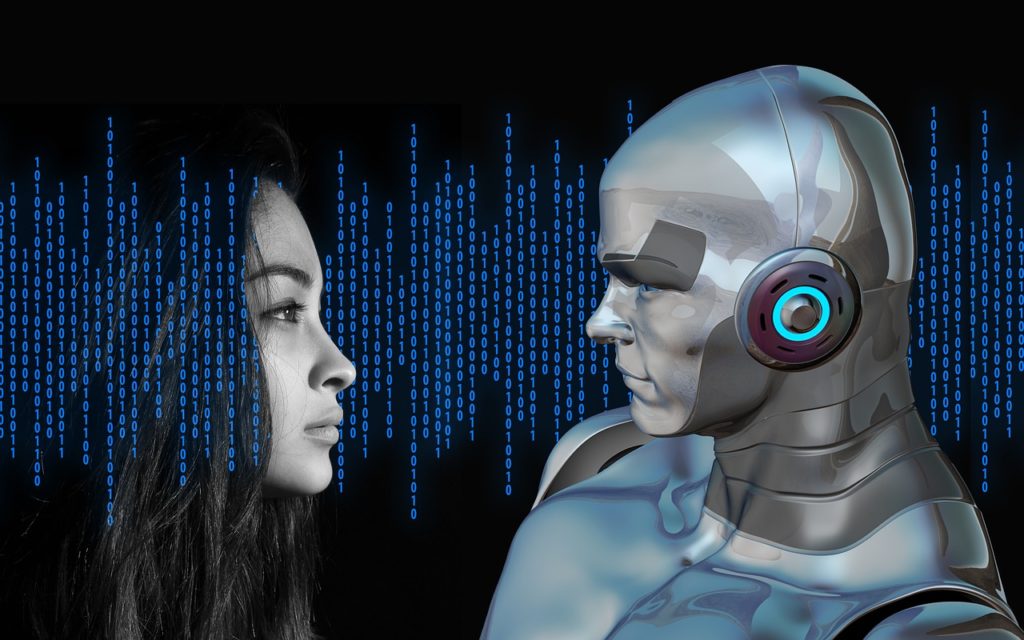Robots to Cobots – A Paradigm Shift
Cobots or collaborative robotics seems to be one of the most notable and multidimensional advances in technology where humans join hands with robots to work together in a shared space. Collaborative robotics has become one of the hottest topics in the industry. Its prominence is assured in trade fairs, articles and workshops. Although there is a rising concern that industrial robots might make humans obsolete, collaborative robotics ensures that humans and robots in collaboration, working hand in hand have a great future.
Collaborative robotics seems to be the future. An ABI Research predicts more than 20,000 collaborative robots by 2020. With advancements in AI automation and the adoption of industrial robots, collaborative robotics has attracted global attention. Employees, businesses and companies around the world are experiencing the shift to the digital revolution. This envisages a paradigm shift in our personal and work areas. The traditional design of automated systems is giving way to collaborative robots with more inclusion of humans.

However, there is a lot of scepticism regarding robots rendering human skills obsolete and the safety of humans while working beside collaborative robots.
Working hand in hand
Machines do what they are best at and humans do what they do best. While collaborative robots can help with labour-intensive physically demanding or dangerous work, humans can do resource-intensive and strategic thinking jobs. Research predicts that most workplaces will neither be fully automated nor devoid of humans. Researchers further envisaged humans and robots working together with specifically assigned tasks. Robots and humans have their own specific strengths, and with their strengths combined, future workplaces are going to witness better productivity, more flexibility, efficient utilisation of resources, the better quality of products and most importantly, improved competition among companies.
Safer than you think!
With human and robot collaboration, we cannot underestimate the risk of injury. With more and more robots entering the markets, safety is a matter of concern. However, data-driven guidelines are provided to counter risks and enable humans and robots to work safely and in close proximity. Moreover features like the speed and force limited design and hand guiding ensures safety while working with the robots. To allay fears, some companies had robots on display, introducing workers to what robots can do and how they can work with them. Furthermore, single and dual collaborative robot arms are designed to have safe contact with humans. Sawyer and Baxter are two examples of collaborative robot arms. They are power and force limited robots. Their safety features make it safe for humans to work with them. In risk assessment, it is the application that is of more concern and not the robot.
Collaborative robots and education:
Education today is witnessing transformation in the technological front at a rapid pace. The 21st-century schools and universities are now preparing themselves to integrate Robotics into their curriculum and seeking to build a generation that will prepare for the 4th industrial Revolution. Cobots are shaping the future of universities and education. In Australia, there’s been a large demand for Collaborative Robots at universities and educational departments. With the introduction of Robotics in schools and universities, it will prepare a generation that is ready for the future job market.
Companies offering collaborative robots have made it appealing and beneficial to educators and students alike. Setting up a cobot is not time-consuming for the educator and pupils. Moreover, they are versatile and can be moved to various locations in the school. Students and educators can work alongside robots. They are cost-effective with a good return on investment.
Undoubtedly the introduction of Collaborative robots overall will:
- enhance low-cost, greater flexible automation
- assist humans in increasing productivity
- help humans take on more advanced and rewarding work
- create better jobs with stimulating roles
- prevent humans from undertaking unsafe tasks
- help resolve space constraints
When humans and robots work for hand in glove in a safe manner, they can open richer avenues in untapped fields. To achieve this, there needs to be a shift in the mindset of companies and their employees. The strengths of both humans and robots have to be harnessed well to ensure competitiveness and enhanced production. The time is now ripe for exploring the endless possibilities of cobotics.


